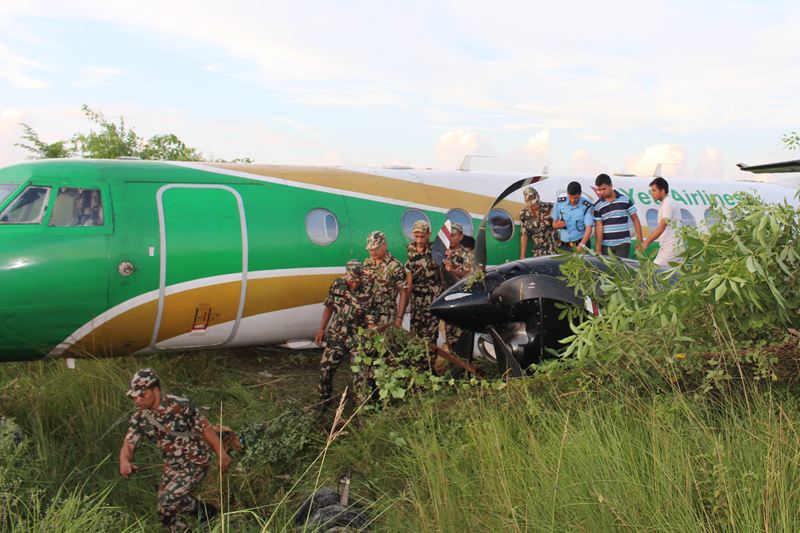Air accident probe still a farce in Nepal
Kathmandu, July 26
Aircraft accident investigation in Nepal still continues to be a farce, as has been once again evident from the hastily presented investigation reports to the Ministry of Culture, Tourism and Civil Aviation, a few days ago.
The reports of the emergency landing of the Makalu Air Cessna aircraft on the banks of the Karnali River as well as the runway excursion case of Yeti Airlines Jetstream flight at Bhairahwa airport last year were tabled by the respective commissions to the acting secretary with the sheer purpose of closing before the fiscal year ended.
As was reported earlier by this daily, the commissions were headed by former CAAN directors general, both air traffic controllers by training but never in possession of appropriate licences.
On the face of it, the Makalu Air case barely qualifies as an accident as the flight had terminated in a forced landing on the banks of the Karnali, and any damage caused thereafter to the aircraft, by the river waters, didn’t quite meet the definition of aircraft accident set by the International Civil Aviation Organisation. Still, the report seen by this daily lists an interesting set of deficient findings regarding matters of flight operation and continuing airworthiness, areas where the recent ICAO Coordinated Validation Mission had raised the status of effective implementation to over 85 per cent and 94 per cent respectively.
Clearly, the investigators have gotten their analyses wrong, else matters pertaining to engine condition and trend monitoring as well as flight crew training should not have been deemed deficient, according to an aviation expert. “The stated inability of the commission to ascertain the installation and functionality status of the emergency locator transmitter safety equipment required on board makes for an amusing finding, too.”
On the other hand, the Jetstream investigation report is even more galling, as the commission had access to the aircraft wreckage as well as flight recorders, unlike the Makalu Air case.
Despite the commission chair and the member secretary visiting the UK-based Air Accidents Investigation Branch for decoding of flight recorders, the report hardly makes for any cogent reading.
The report containing findings and recommendations, as reviewed by this daily, indicate a hasty and disorderly write-up that evade issues of approved landing techniques using precision approach path indicator visual guidance to ensure touchdown at the designated runway area, the timing of brake application by the flight crew as well as the past tendency of not reporting faults at the airline.
“The commission neither bothered to investigate the accuracy of weather reporting at the airport nor chose to investigate the defective flight crew training and licensing processes at CAAN, for fear of possible inconveniences to the commission chief, who had earlier served as chief of the aviation regulator.”
Clearly, these comical investigation reports will do little to improve aviation safety, as is anticipated in the ICAO annex on aircraft accident investigation, stakeholders agreed.
This daily has already reported about the dubious manner in which recent flight school graduates from abroad get their non-current flight crew licenses and instrument ratings from abroad converted to Nepalese licenses by merely hopping on a flight to a Bangkok training facility with a CAAN observer, of course, at the operators’ expenses.
Internationally accepted ICAO regulations on keeping an FCL current require a minimum of three take-offs and landing within 90 days. If this is not met a training flight with a certified flight instructor-type of which there are none in Nepal is required, and not a type-rating instructor, which is a norm now, a CAAN director admitted.






